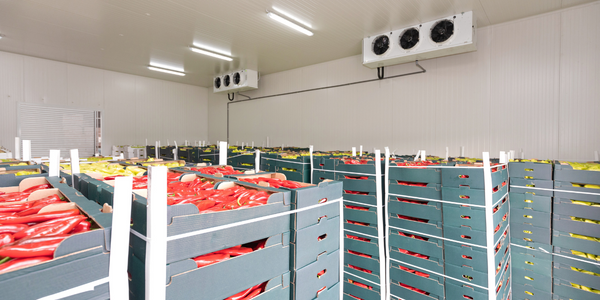Download PDF
Optimized Transatlantic Voyage: A Case Study in IoT-Driven Route Optimization
Applicable Industries
- Marine & Shipping
- Transportation
Use Cases
- Vehicle Telematics
The Challenge
In the fall of 2017, a container transportation company, a client of StormGeo, was planning a transatlantic voyage from Halifax to Bremerhaven in northern Europe. The Master of the vessel had planned to sail via the English Channel due to pilotage considerations, intending to follow a route via 40N 40W en route to the Channel. However, this route posed significant challenges. It would have exposed the vessel to significantly heavier head conditions associated with a lower-latitude storm system. This would have forced the Captain to increase speed and thus fuel consumption to maintain the scheduled arrival time. Additionally, the harsh conditions could have resulted in damage to the vessel and its assets, as well as posing safety hazards to the cargo and crew.
About The Customer
The customer in this case study is a container transportation company that was planning a transatlantic voyage from Halifax to Bremerhaven. The company is a client of StormGeo, a global provider of weather intelligence and decision support services. The company's vessel was initially set to sail a route that would have exposed it to harsh weather conditions, potentially leading to increased fuel consumption, damage to the vessel and its assets, and safety hazards to the cargo and crew. The company was open to route optimization suggestions from StormGeo to ensure a safe and cost-effective voyage.
The Solution
StormGeo, an expert in meteorological services, proposed an alternative route for the voyage. After studying the Captain’s intended route, they calculated that substantial savings were possible along a great circle route from Newfoundland to the Channel. This route, despite including 22 hours of additional sailing through the North American ECA zone, took advantage of high pressure and avoided the harsh conditions of the originally intended route. The recommended route was documented and sent to the client for approval, and then forwarded on to the ship captain for execution. This optimized route not only ensured the safety of the vessel, its assets, and crew but also resulted in significant savings in fuel consumption and associated CO2 emissions.
Operational Impact
Quantitative Benefit
Related Case Studies.

Case Study
Airport SCADA Systems Improve Service Levels
Modern airports are one of the busiest environments on Earth and rely on process automation equipment to ensure service operators achieve their KPIs. Increasingly airport SCADA systems are being used to control all aspects of the operation and associated facilities. This is because unplanned system downtime can cost dearly, both in terms of reduced revenues and the associated loss of customer satisfaction due to inevitable travel inconvenience and disruption.

Case Study
IoT-based Fleet Intelligence Innovation
Speed to market is precious for DRVR, a rapidly growing start-up company. With a business model dependent on reliable mobile data, managers were spending their lives trying to negotiate data roaming deals with mobile network operators in different countries. And, even then, service quality was a constant concern.

Case Study
Digitize Railway with Deutsche Bahn
To reduce maintenance costs and delay-causing failures for Deutsche Bahn. They need manual measurements by a position measurement system based on custom-made MEMS sensor clusters, which allow autonomous and continuous monitoring with wireless data transmission and long battery. They were looking for data pre-processing solution in the sensor and machine learning algorithms in the cloud so as to detect critical wear.

Case Study
Cold Chain Transportation and Refrigerated Fleet Management System
1) Create a digital connected transportation solution to retrofit cold chain trailers with real-time tracking and controls. 2) Prevent multi-million dollar losses due to theft or spoilage. 3) Deliver a digital chain-of-custody solution for door to door load monitoring and security. 4) Provide a trusted multi-fleet solution in a single application with granular data and access controls.

Case Study
Vehicle Fleet Analytics
Organizations frequently implement a maintenance strategy for their fleets of vehicles using a combination of time and usage based maintenance schedules. While effective as a whole, time and usage based schedules do not take into account driving patterns, environmental factors, and sensors currently deployed within the vehicle measuring crank voltage, ignition voltage, and acceleration, all of which have a significant influence on the overall health of the vehicle.In a typical fleet, a large percentage of road calls are related to electrical failure, with battery failure being a common cause. Battery failures result in unmet service agreement levels and costly re-adjustment of scheduled to provide replacement vehicles. To reduce the impact of unplanned maintenance, the transportation logistics company was interested in a trial of C3 Vehicle Fleet Analytics.

Case Study
3M Gains Real-Time Insight with Cloud Solution
The company has a long track record of innovative technology solutions. For example, 3M helps its customers optimize parking operations by automating fee collection and other processes. To improve support for this rapidly expanding segment, 3M needed to automate its own data collection and reporting. The company had recently purchased the assets of parking, tolling, and automatic license plate reader businesses, and required better insight into these acquisitions. Chad Reed, Global Business Manager for 3M Parking Systems, says, “With thousands of installations across the world, we couldn’t keep track of our software and hardware deployments, which made it difficult to understand our market penetration.” 3M wanted a tracking application that sales staff could use to get real-time information about the type and location of 3M products in parking lots and garages. So that it could be used on-site with potential customers, the solution would have to provide access to data anytime, anywhere, and from an array of mobile devices. Jason Fox, Mobile Application Architect at 3M, upped the ante by volunteering to deliver the new app in one weekend. For Fox and his team, these requirements meant turning to the cloud instead of an on-premises datacenter. “My first thought was to go directly to the cloud because we needed to provide access not only to our salespeople, but to resellers who didn’t have access to our internal network,” says Fox. “The cloud just seemed like a logical choice.”





